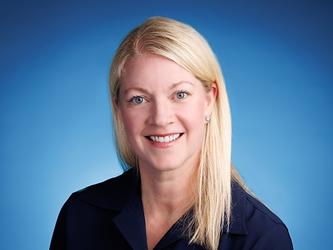Breaking down silos key to business success: takeaways from the CX, UX & MR Summit

The online event started out by examining how the fusion of insights from user experience (UX), market research (MR) and customer experience (CX) can help develop a richer understanding of shoppers. Together with Cereal Partners Worldwide (CPW), Milly Chu, senior research manager at Bulbshare, shared a case study on the shopping habits of cereal buyers that aimed to “humanise quantitative data and understand real behaviour through observation”.
Miriam Schwarz, category insights manager for global innovation & brands at CPW, explained how it had created a global consumer panel called The Future Breakfast Club, noting that branded communities “create emotion and make members feel part of something bigger”. She also pointed out that, unlike traditional research, “there is not a massive difference in cost when you increase the number of participants within the global community model”.
The importance of good communication
Next up, NatWest’s Group Caroline McKinley, senior UX researcher, and Helen Campbell-Watt, head of wealth client insight and experience, relayed how they worked in tandem to improve their customers’ understanding of investment opportunities via the bank’s website.
“Research in this field is complex”, observed Campbell-Watt, referencing factors such as attitude to risk, product knowledge and capacity for loss. McKinley highlighted the functional challenges, with four different insight teams, the legacy of an external agency and a variety of different customer segments, plus the need to understand which research tools were available to them, as well as which ones would work best.
Campbell-Watt outlined the importance of getting the message right for each group, with a focus on “credibility and trust, using appropriate language to cut through the jargon”. The two concurred that the main lessons learned from the process were that “communication is key with so many stakeholders”, the importance of leveraging professional relationships, using “agile framework to [commercial] advantage” and the challenge of “maintaining focus on a customer rather than a business view”.
Making sure MR has a seat in the boardroom
This last point was echoed by Florian Heyden, consumer & marketplace insights manager, country lead at Nestlé. “Sales thinking distracts from consumer value, don’t focus on working on insights for sales”, commented Heyden. He added: “You need to focus on the person paying your salary, if the consumer becomes an after-thought you will lose.”
He also urged insight professionals to “occupy the boardroom” and ensure that “research has the ear of the CEO on a par with other functions such as marketing & sales”. Breaking down the silos is crucial to success, Heyden told delegates, noting that “a holistic approach is required for consumer insight… we need to work together to win together”.
Combining CX and UX to create a complete view of customers
Yorkshire broadband firm KCOM’s senior insights manager Meaka Edwards gave another good example of working in harmony in order to deliver the kind of insight that adds value to the business. When KCOM launched its own website to improve customer experience, it came to the company’s attention that there was a lack of engagement with the brand. Staff had to work collaboratively across different departments to deliver the upgraded site.
As Edwards elaborated, “This hasn’t been just one big project – it has been each area, whether it be insight, marketing, digital or CX teams, all having their own objectives but ensuring we sort out the opportunities for those objectives to work together and complement one another.”
Taking a customer-centric approach to website navigation was also on the agenda for United Utilities and agency Boxclever. Customer insight & exploration manager Shy Sharma worked alongside qualitative insight manager Karla Rendle to improve UX on the homepage and menu bar; create better signposting with customer friendly language; and understand existing navigation to simplify the customer journey.
They summed up the experience in three key points: explore the customer mindset in relation to the type of website; for instance, United Utilities is not a browsing site so needs to be task-orientated. The need to start with a broad perspective was another point made; customers had autonomy when it came to choosing how many categories made sense for them. Lastly, remember to bring stakeholders on the journey to land insight internally; there were key areas of the site where customers needed persuasion to make changes, meaning that engagement at each step helped to drive buy-in.
Understanding the shopper’s journey
The next session looked at the research required to trial a new confectionery product in-store and featured Mars Wrigley’s global agile innovation insights manager Emma Goff in conversation with Hannah Rogers, head of new business at Blue Yonder Research.
Goff touched on testing the prototype and methodology in order to have the confidence to launch a new product, or POS material. This creates a methodology that teams can use in any instance and “takes away the risk [element] for both manufacturer and retailer”. Rogers noted that “understanding the shoppers’ journey from beginning to end is crucial”.
Taking time to properly appraise the data, having a willingness to analyse how you may be failing your customers and then making the necessary changes to improve your offer are crucial factors when a company uses qualitative research to develop a nascent category. This was the point of view espoused by Tom Stazicker, chief executive of water filtration company Virgin Pure.
He worked with Tom Woodnutt, the founder of Feeling Mutual, to overcome the confusion that consumers felt at having to make the initial purchase of the filter and then pay for an ongoing subscription. Together, they carried out CX online retention research to “inspire the fantasy of ownership”.
The two also teamed up to make use of UX lab testing and in-home ethnography, with customers filming themselves using the product to remove the researcher effect, plus the cost of the filter was reframed as an investment. The strategy worked effectively, resulting in a 50% increase in sales.
Empathy drives experiential enhancement
The final session of the day looked at the use of journey mapping to understand the match day experience through the eyes of the fans. Along with other City Group football clubs, Manchester City was looking for insights on the fans’ motivation and needs in order to turn that into better experiences.
Andrew Gilligan, head of research and insights at City Football Group, said that the project “put [them] in the shoes of our own fans” to empathise with what visiting the stadium as a fan is like and drive improvement of the fan experience. This was achieved through the use of research app Indeemo, which included people filming their experiences of the Etihad Stadium in Manchester on a match day.
The real value, according to Gilligan, is in individual moments of the day, such as ticket buying or purchasing a drink at halftime and working out pressure points and issues with the system.
He concluded: “It is invaluable to us because it helps us to look at our stadium experience through the eyes of our supporters. This is a key milestone in our fan experience strategy to create a real sense of empathy between the organisation and its end users.”

We hope you enjoyed this article.
Research Live is published by MRS.
The Market Research Society (MRS) exists to promote and protect the research sector, showcasing how research delivers impact for businesses and government.
Members of MRS enjoy many benefits including tailoured policy guidance, discounts on training and conferences, and access to member-only content.
For example, there's an archive of winning case studies from over a decade of MRS Awards.
Find out more about the benefits of joining MRS here.














0 Comments